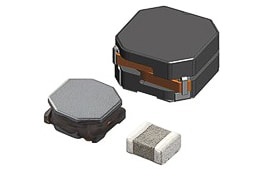Machine learning (ML) and artificial intelligence (AI) are expected to have a significant impact on the semiconductor industry in the future, both in terms of driving demand for advanced semiconductor devices and transforming the design, manufacturing, and testing processes. Here are some ways ML and AI may affect the industry: Demand for AI accelerators: As AI applications become more widespread, there will be increasing Read more…

Spintronics, short for “spin transport electronics,” is an emerging field in nanotechnology and solid-state physics that explores the use of an electron’s intrinsic spin, in addition to its charge, to transmit, process, and store information. The spin of an electron is a fundamental quantum property that can be described as an “up” or “down” state, representing a binary bit of information (0 or 1). Read more…
A semiconductor factory, also known as a semiconductor fabrication facility or “fab,” is a high-tech manufacturing facility that produces integrated circuits, microprocessors, and other electronic components. Here are the basic steps involved in how a semiconductor factory works: Wafer fabrication: The first step in semiconductor manufacturing is wafer fabrication. This involves creating a wafer of pure silicon that will serve as the substrate for Read more…

While KES Systems has offices around the world, including the US, Taiwan, China, Philippines, Malaysia – our headquarters and some of our manufacturing, design and engineering operations are in Singapore. KES is happy to welcome visits from our customers and prospective customers. If you are planning a visit to Singapore to see us, here are a few tips to help make your trip the Read more…

Quantum computing is based on the principles of quantum mechanics, which describe the behavior of matter and energy at the quantum level. Unlike classical computing, which is based on bits that can only exist in two states, 0 or 1, quantum computing uses qubits, which can exist in multiple states simultaneously. Here are the basic details of how quantum computing works: Quantum superposition: A Read more…
The design of a semiconductor is a complex process that involves multiple stages, from concept to final product. Here are the general steps involved in designing a semiconductor: Requirements Gathering: The first step is to gather requirements for the semiconductor device. This includes determining the device’s intended application, performance requirements, and target cost. Architecture Design: Once the requirements are gathered, the device’s architecture is Read more…
As technology advances and semiconductor devices become more complex, burn-in procedures will continue to play an important role in the semiconductor industry. However, there are several trends that are likely to shape the future of burn-in testing: Increasing demand for reliability: As semiconductor devices are increasingly used in safety-critical applications such as automotive, medical, and aerospace, there will be an increasing demand for devices Read more…

Recognizing the extraordinary supply chain issues that are causing delays of many months to more than a year for passive components, KES introduces our branded custom solutions for inductors, capacitors, resistors and more. Built to the highest quality and meeting all appropriate industry specifications and standards – custom components from KES may be the solution to your supply chain issues. With availability of many Read more…

There are many factors involved when choosing the components for your board assembly. Whether it is a consumer, aerospace, down-hole drilling, industrial, or test boards – At KES, we help our customers by selecting the parts for their Bill Of Materials (BOM) based on their criteria and the application. Here are a few guidelines for anyone designing an electronic product that will help them Read more…

Bert Templeton – June 24, 2020 Bert Templeton – June 24, 2020 The growth of electronics, and along with it, semiconductor content in the automotive industry, continues to climb at a healthy rate, outpacing most other segments. Analyst estimates indicate that the CAGR of automotive electronics will grow at nearly five and a half percent through 2021. That is roughly triple the rate of Read more…